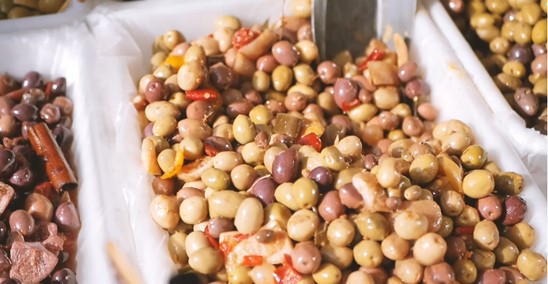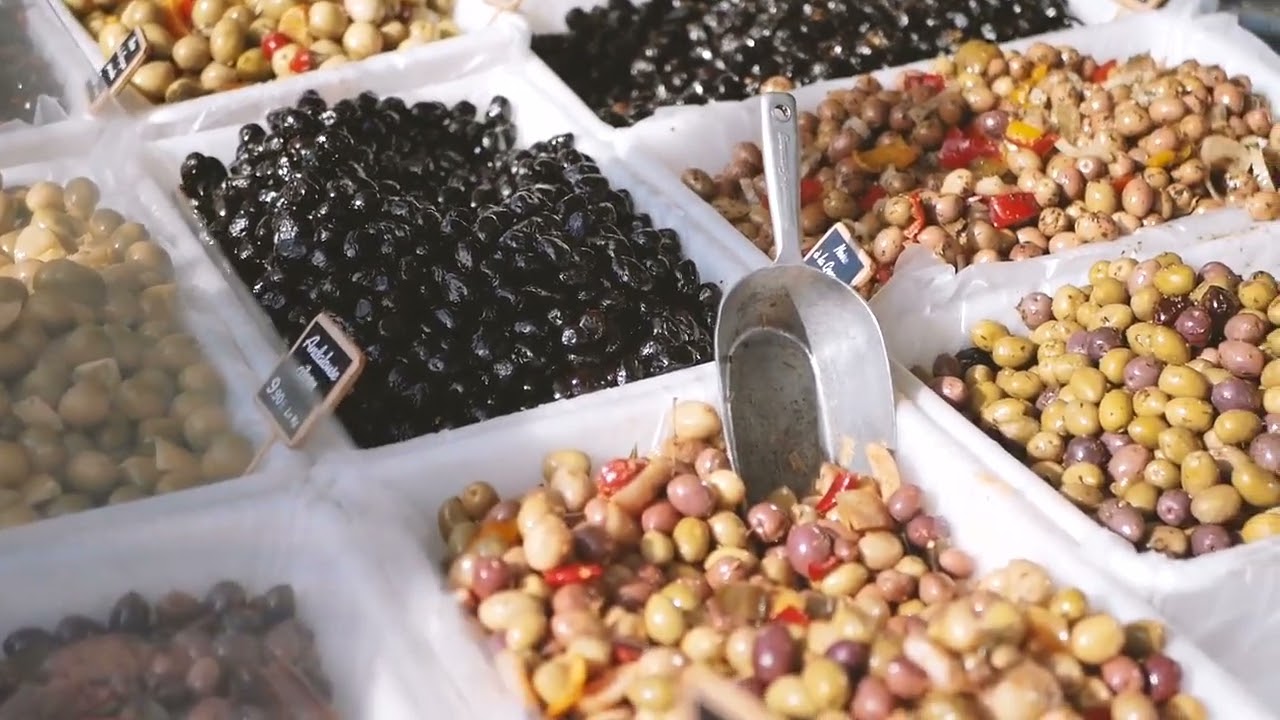=-=-=-=-=-=-=-=-=-=-=-=-=-=-=-=-=-=-=-=-=-=
Enjoy Your Best Health Ever! PLUS…
Get Incredible Mental Focus and Potentially
Add Years to Your Life! with The AIP Diet
=-=-=-=-=-=-=-=-=-=-=-=-=-=-=-=-=-=-=-=-=-=
Scientists are always looking to plants to find medicinal and therapeutic secrets. Discoveries of natural compounds within the olive tree and olives, provide promising health and medical benefits. Organic olive oil has significant health related properties that have spanned centuries and cultures in the Mediterranean.
The Mediterranean olive dates back 6000 years and was native to Iran, Syria and Palestine (Asia Minor). From there it spread to the Mediterranean basin. It is one of the earliest known cultivated trees. According to the Bible, an olive leaf was that which a dove brought back to Noah, as an indication the great flood waters were abating.
The olive tree thrives best in a sunny position and climate. A rocky subsoil suits it well. The trunk is knotty, hard, and gnarled, the bark smooth and ash colored. Olive wood is valuable for its durability and is crafted into many items such as gourmet cooking utensils. The olive tree experiences slow growth, but it lives very long. It is reported that the olive trees on Mount of Olives in Jerusalem, are over 2000 years old.
It is commonly believed the Bible passage of “the fruit thereof shall be for meat, and the leaf thereof for medicine,” refers to the olive tree. Olive leaves are silver grey-green, and possesses the health qualities of “olive leaf extract” which is pressed from them. Extracted from olive leaves is a bitter substance named oleuropein. In the 1960’s researchers reported that oleuropein lowered blood pressure in animals, this caused immediate medicinal interest in the olive leaf. There are new studies that indicate olive leaf extract may be a natural preventative against the common cold and flu.
The olive is believed to be a source of wealth for the Minoan Kingdom. Egyptians tombs dating back as far as 2000 BC have been proved to contain olives. The Greeks spread the usage of olives to the Romans who, in turn, spread it across their vast empire. The use of olive oil has been advocated by many religions and cultures. The early Greek Kings were anointed with olive oil. It was also used to anoint winning Olympic athletes. Across many cultures, olive oil is recognized for healthy benefits for both the inner and outward body.
Some research indicates extra-virgin olive oil is the most digestible of the edible fats. Olive oil also helps to assimilate vitamins A, D and K in the human body. Benefits of consuming olive oil include slowing down the aging process and helping liver, bile, and intestinal functions. Olive oil is valued for its culinary attributes and organoleptic virtues, these being: flavor, bouquet or aroma, and color. Various grades of olive oil are derived from the time of pressing. Earlier pressings are regarded as better quality. Cold pressed olive oil is a pressing process requiring no heat or chemicals, which destroy vital nutrients. This olive oil is generally the best to use for cooking and healthy cuisine.
Olive oil has been extensively used in cooking and forms an integral part of the basic Mediterranean diet. It is a healthier substitute to butter. Strong and pungent flavored olive oils are great for frying fish or other items having a strong flavor. Extra virgin olive oil goes well with salads. A late harvest mission variety olive oil, which is mellow, can be used for baking cakes. Gourmet olive oil is a healthier and tastier substitute to other fatty cooking oils. The health benefits of cold pressed olive oil already have federal agency approval. The U.S. Food and Drug Administration authorized marketing ads that say organic olive oil helps reduce the risk of coronary disease and disorders.
A simple recipe for Olive Oil Bread Dipping Sauce.
Bread Dipping Sauce
Servings : 2 - 4
Preparation time : 10 minutes
Ingredients:
- ½ cup virgin olive oil
- 1 tablespoon fresh parsley, minced (Italian parsley is best)
- 1 tablespoon fresh basil, minced
- ½ teaspoon fresh rosemary, minced
- 1 tablespoon fresh garlic, minced
- 1 teaspoon oregano
- 1 teaspoon thyme
- 1 teaspoon black pepper
- ¼ teaspoon red pepper flakes, crushed well
- 1/8 teaspoon fresh lemon juice
- Salt to taste
Directions:
- Heat the olive oil in a pan. Add the garlic and sauté till it changes color.
- Add all the other ingredients and cook for about 2 – 3 minutes. Remove from the heat.
Serve as a bread dip.
Olives
Olives are best used in salad and there are several types of Olives to choose from. In modern grocery stores there are dozens of gourmet olives widely available. Gone are the days of canned black olives and green olives with pimentos as the only choices. For those of us who remember the days of opening a can of black olives and placing one on each finger then systematically biting them off here are some varieties of olives and recipes:
Nicoises: Is a earthy rich olive commonly used in salad. The curing of this olive in red-wine vinegar gives it a distinctive taste.
Green olives with herbs de Provence: This vibrant citrus flavored olive is a delightful blend of herbs de Provence spices and large green olives. It is an excellent choice to use in surf dishes and with sweet spices.
Mount Athos green with Sicilian herbs: This is a second olive that utilizes herbs to dominate the pallet. Rosemary, garlic, mustard seed, and red pepper flakes give this olive a spicy appeal.
Mount Athos green stuffed with garlic: For a modern twist on the martini this olive is an excellent choice. It is stuffed with rich flavorful garlic and lends itself well to pizza as well as martinis.
Mount Athos green olives with sun-dried tomatoes: Sun-dried tomatoes give this heavy olive an intense flavor that is sophisticated and ideal for snacking.
Sun-dried olives: The drying of this olive gives it a rich flavor that blends wonderfully in sauces for serving over pasta.
Kalamatas: A tangy black olive cured in red-wine vinegar that can be from Italy or California. The California variety is denoted with a ‘c’ spelling rather than a ‘k’.
Alfonsos: This robust winey tasting olive is soft and similar to the kalamata. It is a popular choice in antipasto salads.
Halkididis: Very similar in flavor to the kalamatas this olive is excellent blended with cream cheese and garlic for a flavorful dip.
Lucques: This meaty buttery olive contains pits but is still a wonderful choice with provolone cheese and bruchetta.
Until Next Time… Be Well!
Kind Regards,
RSN
=-=-=-=-=-=-=-=-=-=-=-=-=-=-=-=-=-=-=-=-=-=-=-=
Lose Weight While Still Enjoying Your Favorite
Meals with this Water Hack
=-=-=-=-=-=-=-=-=-=-=-=-=-=-=-=-=-=-=-=-=-=-=-=

